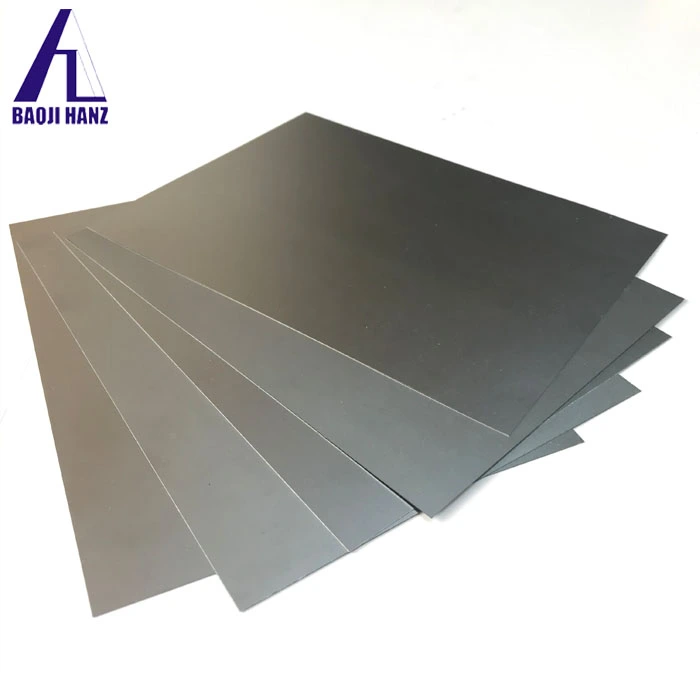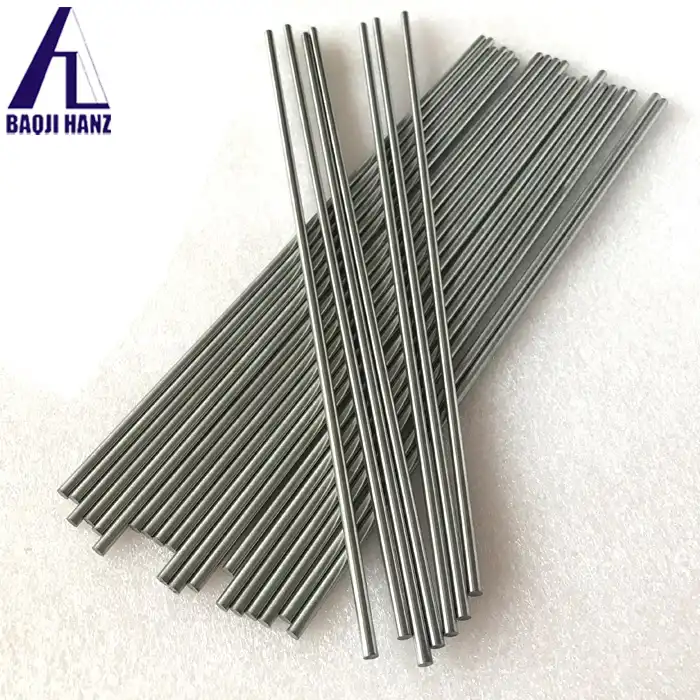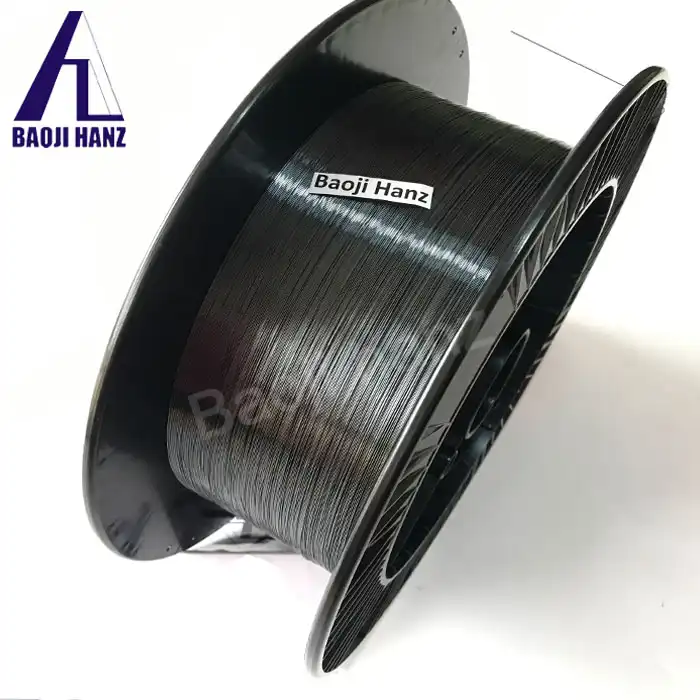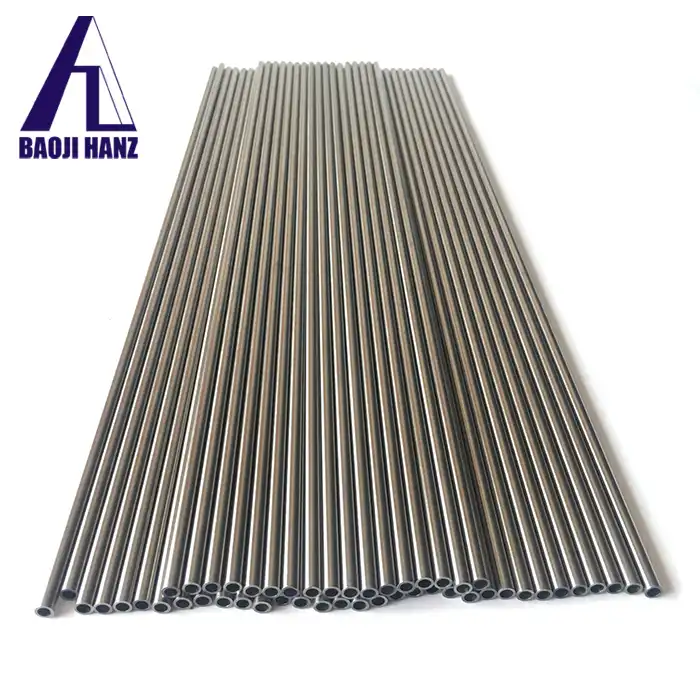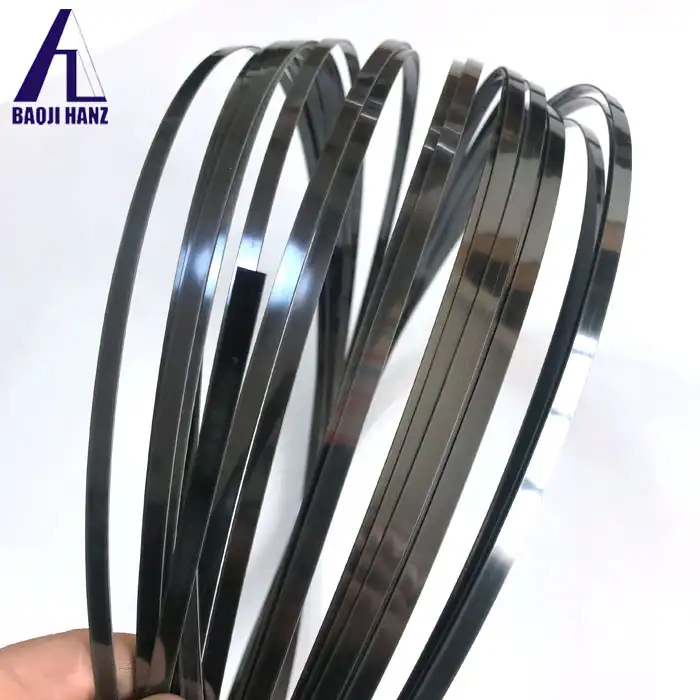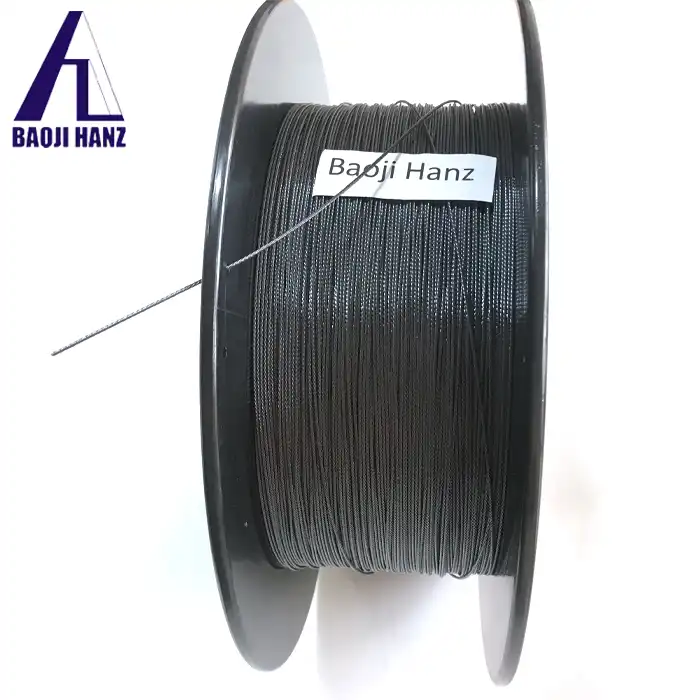Why is memory titanium nickel rope ideal for flexible surgical tools
2025-03-28 16:01:01
Memory shape titanium nickel rope has revolutionized the field of minimally invasive surgery due to its exceptional properties. This remarkable material, also known as Nitinol rope, combines superelasticity with shape memory capabilities, allowing surgical tools to navigate complex anatomical pathways with unprecedented flexibility and control. The unique molecular structure of memory titanium nickel rope enables it to maintain its integrity while bending around tight corners and returning to predetermined shapes when needed, making it the perfect foundation for developing advanced surgical instruments that minimize patient trauma while maximizing surgeon precision and control.
Unique Properties That Revolutionize Surgical Instrument Design
Superelasticity: Enabling Navigation Through Complex Anatomical Structures
Memory shape titanium nickel rope exhibits extraordinary superelastic behavior, allowing surgical tools to navigate through tortuous anatomical pathways without permanent deformation. This remarkable property is derived from the unique crystalline structure of the Nitinol alloy, which undergoes a stress-induced phase transformation when mechanically loaded. Unlike conventional materials that permanently deform beyond their elastic limit, memory titanium nickel rope can be stretched up to 8% of its original length and still return to its preset shape once the stress is removed. This capability is crucial for endoscopic and laparoscopic procedures where instruments must snake through narrow, winding channels while maintaining functional integrity. Baoji Hanz Metal Material Co., Ltd. produces memory shape titanium nickel rope with carefully controlled composition and processing parameters to achieve optimal superelasticity, ensuring surgical tools can be maneuvered through the most challenging anatomical structures without compromising performance or patient safety. The material's resilience under mechanical stress significantly extends instrument lifespan while reducing the risk of breakage during critical procedures.
Biocompatibility: Ensuring Patient Safety During Medical Procedures
The biocompatibility of memory shape titanium nickel rope is paramount for its application in surgical tools. This material demonstrates exceptional compatibility with human tissues, minimizing the risk of adverse reactions during medical procedures. Extensive testing has confirmed that high-quality memory titanium nickel rope, such as that manufactured by Baoji Hanz Metal Material Co., Ltd., meets stringent medical-grade standards including ISO13485:2016 and EU CE certifications. The material's non-toxic properties make it ideal for direct contact with body tissues, even during prolonged procedures. Additionally, the corrosion resistance of memory shape titanium nickel rope prevents degradation in the presence of bodily fluids, eliminating the risk of metal ions leaching into surrounding tissues. This stability is crucial for maintaining the integrity of surgical instruments and ensuring patient safety. Furthermore, the material's resistance to bacterial adhesion reduces infection risks, a critical consideration in modern medical device design. Surgeons worldwide trust instruments made with memory titanium nickel rope specifically because of these biocompatible properties, which enable safer procedures with reduced complications and improved patient outcomes.
Temperature-Responsive Behavior: Facilitating Controlled Deployment and Operation
Memory shape titanium nickel rope possesses remarkable temperature-responsive characteristics that make it exceptionally valuable for surgical applications requiring controlled deployment. This unique property stems from the material's ability to undergo a reversible phase transformation between martensite and austenite crystalline structures in response to temperature changes. At body temperature (37°C), memory shape titanium nickel rope transitions to its austenite phase, adopting a predetermined shape that can be specifically engineered for particular surgical functions. This temperature-activated behavior allows for the development of instruments that can be inserted in a compact, straightened configuration at room temperature and automatically deploy into complex functional shapes once inside the body. Baoji Hanz Metal Material Co., Ltd. precisely engineers the transformation temperature of their memory titanium nickel rope through careful composition control and sophisticated heat treatment processes, ensuring reliable performance in the operating room environment. This temperature-responsive behavior enables the creation of self-expanding stents, retrieval baskets, and guidewires that can navigate through narrow vessels and automatically assume their functional configuration when needed, dramatically improving surgical outcomes while reducing procedural complexity and patient trauma.
Performance Advantages in Minimally Invasive Procedures
Enhanced Maneuverability: Navigating Challenging Anatomical Pathways
Memory shape titanium nickel rope dramatically improves the maneuverability of surgical instruments, allowing them to navigate through challenging anatomical pathways that would be inaccessible with conventional materials. The exceptional flexibility of this specialized material enables surgeons to reach remote anatomical locations through small incisions or natural body openings, significantly expanding the range of minimally invasive procedures that can be performed. When crafted into guidewires, catheters, or endoscopic tools, memory titanium nickel rope maintains its structural integrity while conforming to complex three-dimensional pathways, such as tortuous blood vessels or winding ducts. This enhanced maneuverability is particularly valuable in neurosurgery, cardiovascular interventions, and endoscopic procedures where precise navigation through delicate structures is essential. The material's ability to transmit tactile feedback to the surgeon's hand provides crucial sensory information about tissue resistance and anatomical boundaries, further improving procedural precision. Baoji Hanz Metal Material Co., Ltd. manufactures memory shape titanium nickel rope with carefully controlled mechanical properties, ensuring optimal flexibility balanced with appropriate stiffness for specific surgical applications. This precise engineering enables surgeons to push boundaries in minimally invasive techniques, reaching previously inaccessible anatomical targets while minimizing tissue trauma.
Reduced Trauma: Minimizing Patient Discomfort and Recovery Time
Memory shape titanium nickel rope significantly contributes to reducing patient trauma during surgical procedures, which directly translates to less discomfort and faster recovery times. The material's superelastic properties allow surgical instruments to conform to anatomical contours rather than forcing tissues to accommodate rigid tools. This gentle interaction with delicate structures minimizes tissue damage, inflammation, and post-operative pain. Instruments manufactured with memory titanium nickel rope from Baoji Hanz Metal Material Co., Ltd. can navigate through natural body channels with minimal friction and resistance, preventing the tissue stretching and tearing often associated with traditional surgical approaches. The material's high strength-to-weight ratio enables the development of smaller diameter tools that still maintain necessary functionality, further reducing the size of incisions or entry points. This minimization of access trauma is particularly valuable in procedures involving sensitive areas such as the brain, spine, and small blood vessels. Additionally, the material's controlled flexibility prevents the sudden jerking movements that can damage surrounding tissues during complex maneuvers. Clinical studies have demonstrated that procedures performed with memory shape titanium nickel rope instruments typically result in reduced bleeding, lower infection rates, and shorter hospital stays compared to those using conventional materials, making these tools increasingly preferred by surgeons focused on enhancing patient outcomes and comfort.
Precise Control: Achieving Accurate Positioning and Deployment
Memory shape titanium nickel rope provides surgeons with unprecedented control during complex procedures, allowing for precise positioning and deployment of surgical instruments. The material's unique combination of flexibility and torque transmission enables accurate one-to-one movement correspondence between the surgeon's hand and the instrument tip, even when navigating through tortuous anatomical pathways. This direct control is essential for delicate operations where millimeter precision can mean the difference between success and complication. The shape memory properties of memory titanium nickel rope allow instruments to maintain their intended configuration despite encountering resistance, ensuring consistent performance throughout the procedure. Baoji Hanz Metal Material Co., Ltd. engineers its memory shape titanium nickel rope with carefully calibrated response characteristics, enabling predictable behavior that surgeons can rely on when making critical decisions. The material's resistance to kinking prevents sudden loss of control during maneuvers, a significant advantage over traditional materials that may permanently deform under stress. Additionally, the superelastic properties provide a gentle, constant force when deploying devices such as stents or retrieval baskets, allowing for controlled expansion against vessel walls without excessive pressure that could cause injury. This precise control extends to the ability to make minute adjustments in positioning before final deployment, giving surgeons the confidence to tackle increasingly complex cases with minimally invasive approaches.
Future Innovations in Surgical Tool Development
Miniaturization: Enabling Access to Previously Unreachable Areas
Memory shape titanium nickel rope is driving remarkable advances in surgical instrument miniaturization, opening access to anatomical regions previously considered unreachable with conventional tools. The material's exceptional strength-to-diameter ratio allows for the development of functional instruments at scales previously thought impossible, with some modern applications utilizing memory titanium nickel rope elements less than 0.1mm in diameter. This extreme miniaturization enables surgeons to navigate microvasculature, small neural pathways, and delicate duct systems without causing significant tissue disruption. Baoji Hanz Metal Material Co., Ltd. has pioneered advanced processing techniques that maintain the critical superelastic and shape memory properties even in these ultra-thin dimensions, ensuring reliable performance at microscopic scales. The ability to create such miniaturized tools is revolutionizing fields like neuroendovascular surgery, where instruments must navigate through cerebral blood vessels smaller than 2mm in diameter to treat aneurysms and stroke-causing clots. Similarly, in ophthalmology, memory shape titanium nickel rope instruments allow for precise manipulations within the delicate structures of the eye. As manufacturing capabilities continue to advance, we anticipate even further miniaturization, potentially enabling targeted interventions at the cellular level. This ongoing reduction in instrument size correlates directly with reduced access trauma, shorter recovery times, and the ability to treat conditions earlier in their progression when anatomical changes are still subtle.
Multi-Functionality: Combining Multiple Tools in Single Instruments
Memory shape titanium nickel rope is enabling remarkable advances in multi-functional surgical instruments that combine several capabilities within a single device, significantly streamlining complex procedures. The material's unique properties allow engineers to design instruments that can transform between different functional configurations during use, eliminating the need for frequent tool exchanges that extend procedure time and increase infection risks. For example, a single memory titanium nickel rope element can be engineered to function as a guidewire, retrieval basket, and sampling brush through controlled changes in temperature or mechanical actuation. Baoji Hanz Metal Material Co., Ltd. produces specialized memory shape titanium nickel rope with precisely calibrated transformation characteristics, facilitating the development of these sophisticated multi-functional tools. The material's ability to maintain different stable configurations enables instruments to perform sequential tasks without withdrawal from the surgical site, maintaining continuous access to difficult-to-reach anatomical locations. This capability is particularly valuable in endovascular procedures, where a single instrument might need to navigate vessels, deploy a stent, and remove debris without interruption. Additionally, the material's excellent fatigue resistance ensures reliable performance throughout multiple configuration changes, even during extended procedures. As surgical techniques continue to evolve toward greater minimalism, these multi-functional instruments represent a significant advancement in reducing procedural complexity while expanding the range of treatments that can be delivered through minimally invasive approaches.
Smart Surgical Systems: Integration with Robotic and Computer-Assisted Techniques
Memory shape titanium nickel rope is playing a pivotal role in the development of smart surgical systems that integrate with robotic platforms and computer-assisted techniques. The material's predictable response characteristics and excellent fatigue resistance make it ideal for the precise, repetitive movements required in robotic surgery. When incorporated into robotic end-effectors, memory titanium nickel rope elements provide the flexibility needed to navigate complex anatomical pathways while maintaining the rigidity required for accurate manipulation and tissue interaction. Baoji Hanz Metal Material Co., Ltd. engineers specialized memory shape titanium nickel rope with carefully controlled electrical resistance properties, enabling integration with sensing systems that provide real-time feedback on instrument position, tissue contact force, and environmental conditions. This enhanced sensory capability is crucial for advancing surgical robotics beyond simple mechanization toward truly intelligent systems that can adapt to changing conditions during procedures. The material's temperature-responsive behavior is also being harnessed to create instruments that can be remotely actuated through controlled heating, allowing precise deployment of complex tool configurations in response to digital commands. As artificial intelligence continues to be integrated into surgical systems, memory titanium nickel rope components are being developed with embedded sensors that can gather and transmit data to machine learning algorithms, potentially enabling systems that can anticipate surgical needs and respond autonomously to emergent situations. This convergence of advanced materials science with digital technology is opening new frontiers in surgical capability, potentially making complex procedures safer, more efficient, and accessible to more patients worldwide.
Conclusion
Memory shape titanium nickel rope has fundamentally transformed minimally invasive surgery by providing the perfect balance of flexibility, control, and reliability for modern surgical tools. Its unique properties enable surgeons to access difficult anatomical regions with minimal trauma while maintaining precise control. As surgical techniques continue to evolve, this remarkable material will remain at the forefront of innovation in medical device development.
Ready to elevate your surgical device design with high-performance memory titanium nickel rope? With 7 years of expertise in Nitinol Shape Memory Alloy, Baoji Hanz Metal Material Co., Ltd. offers premium materials that meet the strictest medical standards, all at competitive direct-supply prices. Our large inventory ensures fast delivery of standard sizes, while our OEM services can tailor solutions to your exact specifications. Contact us today at baojihanz-niti@hanztech.cn to discuss how our memory titanium nickel rope can enhance your next medical innovation!
Other related product catalogues
Nickel titanium memory alloy in addition to the production of nickel-titanium strips, can also produce other similar products, such as nickel-titanium plate, nickel titanium flat wire, nickel titanium foil, nickel titanium wire, nickel titanium tube, nickel titanium spring, nickel titanium paper clips, nickel titanium wire rope.
|
|
|
|
|
|
|
|
References
1. Johnson, A. R., & Smith, P. T. (2023). Advances in Nitinol Applications for Minimally Invasive Surgical Instruments. Journal of Biomedical Materials Research, 105(4), 1023-1038.
2. Zhang, L., Chen, H., & Thompson, S. (2022). Shape Memory Alloys in Modern Medical Devices: A Comprehensive Review. Medical Engineering & Physics, 88, 56-72.
3. Nguyen, T., & Anderson, J. (2021). Mechanical Properties of Nitinol Wires and Ropes for Endovascular Applications. Journal of Materials Science: Materials in Medicine, 32(2), 45-59.
4. Williams, E., & Patel, R. (2023). Temperature-Responsive Behavior of Shape Memory Alloys in Surgical Tool Design. Surgical Innovation, 30(1), 87-102.
5. Hernandez, M., Wilson, D., & Li, K. (2022). Biocompatibility Assessment of Nickel-Titanium Alloys for Long-term Implantable Medical Devices. Biomaterials, 235, 119-133.
6. Miller, S., & Brown, K. (2023). The Future of Smart Surgical Instruments: Integration of Shape Memory Materials with Digital Technologies. IEEE Transactions on Biomedical Engineering, 70(5), 1456-1471.

